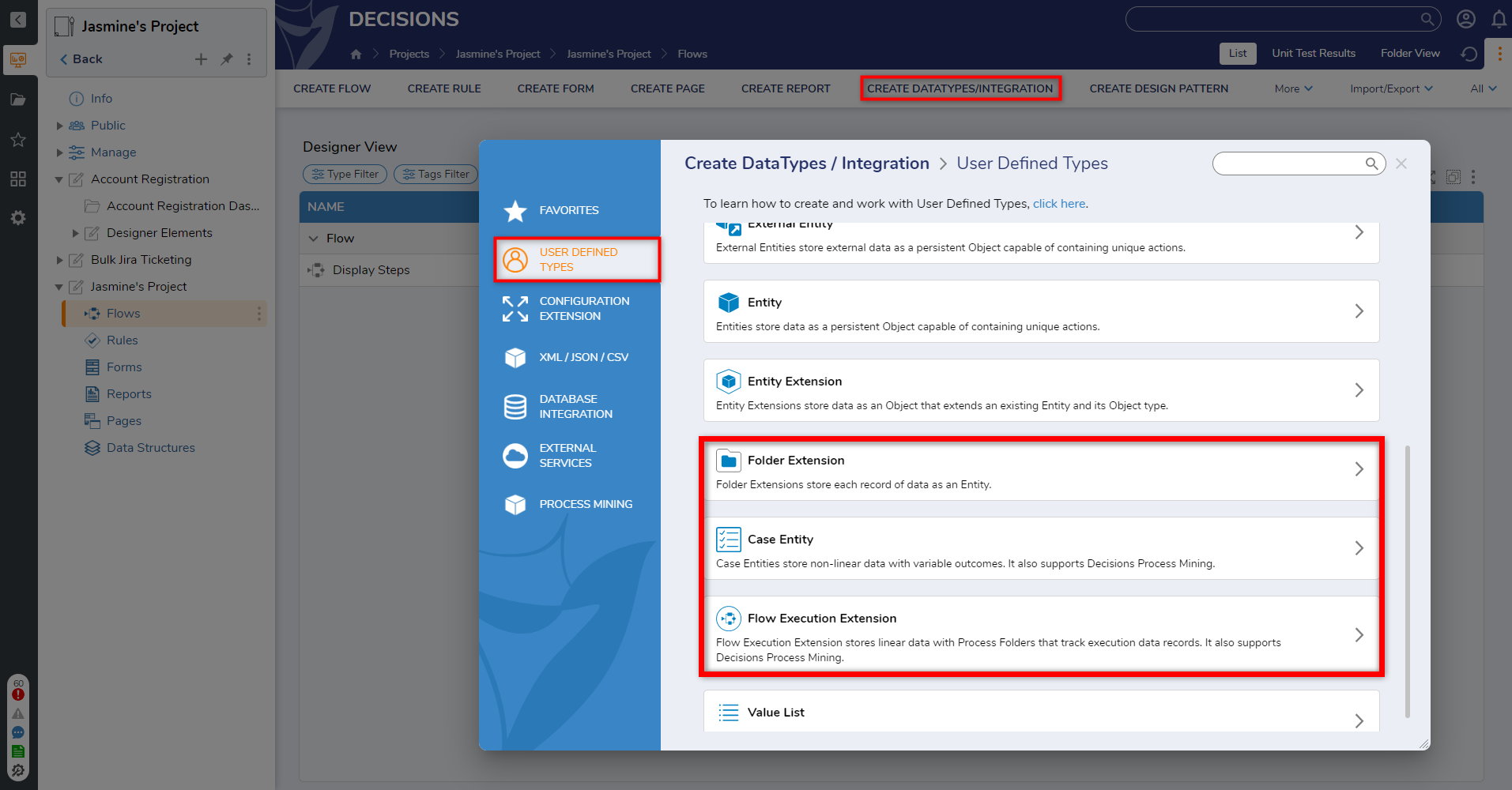Overview
Extension Data is a connection that enables users to create a relationship between a User-Defined Type and a Decisions Default Type, or between two User-Defined Types. Once created, users can use Extension Data within Reports and Flows as well as reference it through the Query Editor. This article discusses building with Extension Data, a break-down of common use cases, and how to reference Extension Data within the Database backend.
Building with Extension Data
Default Decision Types and User-Defined Types
Before building with Extension Data in Decisions, there are two distinct Data Types users should be aware of: Default Decision Types and User-Defined Types. When creating a relationship between data, within a Report, for example, users will utilize all data within the Extension Data Folder. Once Extension Data has been created, this Folder will contain Default Data Types (such as Folder Name and Created on Date) along with User-Defined Types (such as Email and Application Number).
Using Default Data Structures
Although Extension Data can be set up manually in Decisions, there are three Data Structures that utilize Extension Data by default: Folder Extensions, Flow Execution Extensions, and Case Entities. Once built, these Data Structures will automatically connect User-Defined Types without any additional configuration.

How Extension Data is Used in Decisions
Common Use Cases
Users can utilize Extension Data in various use cases throughout the Decisions platform. The following articles describe how Extension Data can be used within Flows, Reports, Rules, etc.
| Use Case | Description |
| Using Extension Data in Reports | Extension Data adds configurability to items displayed in reports. |
| Extension Data in Rules and Flows | Default Flows and Rules do not have Extension Data included in inputs, but there are certain types of Designer Behaviors that can utilize Extension Data right away (i.e. Configuration folders). |
| Default Extension Data Structures | There are three User-Defined Types that utilize Extension Data behavior by default: Folder Extension, Flow Execution Extension and Case Entity. |
| Creating Entity Extensions | Users who wish to add extensions to another aspect of their project can create an Entity Extension. This is similar to creating a data structure but involves adding this extension to another Datatype. |
| Fetching Data with Extensions | Utilizing the Fetch Entities Step, users can navigate to the Extension Type Name in Properties, and Fetch Entities that contain the desired Extension Type. |
| Assignment Extensions | After picking Extension Data from the Extension Type Name Properties field, a new input will populate that enables users to use their Extension Data when creating an Assignment. |
| Folder Extensions | Since Folder Extensions are Default Types in Decisions, adding one as a Data Source, in a Report for example, will give users immediate access to folder-specific information, and user-defined information. |
| Querying Extension Data | Users can Query the Database in multiple places to locate Extension Data. Default Decisions Types will have a field for extension_id, and if any of the tables are null or empty, no Extension Data exists here. |
Understanding Connections in the Database Backend
Utilizing the Query Editor to Reference Extension Data
Querying a Folder returns all data associated with that Folder, as well as any created Extension Data. Users can reference Extension Data in the Database by writing a query that selects a specific Folder or the name of the Extension Data. The key to referencing Extension Data in both of these examples is to look for the extension_id column after submitting the query. If this column contains a value, the Extension Data exists in the Database, and if this Column is blank, the Extension Data does not exist within the Database. For more information on writing queries in Decisions, please refer to Query Editor.
.png)
.png)
.png)